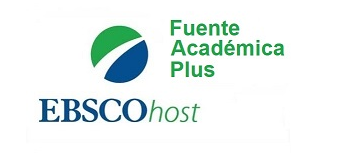The architecture project and its stakeholders: Participation as a key
DOI:
https://doi.org/10.17981/mod.arq.cuc.25.1.2020.01Keywords:
architectural practice, architecture project, participation, project management, social construction, stakeholdersAbstract
The architect develops building projects in which people can operate under appropriate conditions. The architect starts of the requirements of stakeholders, which must be given meaning to solve the problem in the most appropriate way, with the resources available and with a multidisciplinary team. Partial results of an exploratory study on the firm of architecture are presented, in this article those related to the project and its stakeholders. It was approached from a qualitative approach with phenomenological design whose key participants are the architects, within their professional social context (the firm of architecture). The research brought us closer to: (1) the understanding of the project, its continuity and success, as well as the important role of their stakeholders each from their worldview; (2) a prospect of the architecture project as a social construction that brings us closer to a built environment sustainable for the development of human activity.
Downloads
References
Acosta, D. (2009). Arquitectura y construcción sostenibles: Conceptos, problemas y estrategias. Dearq, (4), 14–23. https://doi.org/10.18389/dearq4.2009.02
Acosta, D. (2012). Principios y valores en el diseño y en la práctica de la arquitectura. [Trabajo de ascenso]. Universidad Central de Venezuela, Caracas, Venezuela.
Chiavenato, I. (2009). Comportamiento Organizacional. (2 ed.). México, D.F.: Mcgraw-Hill Interamericana.
COAC. (2016). Los Arquitectos. Situación, oportunidades y perspectivas. [Encuesta]. Barcelona: COAC. https://www.arquitectes.cat/es/encuesta-los-arquitectos-situacion-oportunidades-y-perspectivas
Cuff, D. (1991). Architecture: the story of practice. Cambridge: The MIT Press.
Emmitt, S. (2014). Design Management for architects. (2 ed.). Chichester: Wiley-Blackwell.
Escudero, D. y Olaya, A. (2009). Metodología de la Investigación. Medellín: Universidad de Antioquia. Disponible en http://aprendeenlinea.udea.edu.co/lms/moodle/course/view.php?id=481
Fernández, J. L. y Bajo, A. B. (2012). La Teoría del Stakeholder o de los Grupos de Interés, pieza clave de la RSE, del éxito empresarial y de la sostenibilidad. Revista Internacional de Investigación en Comunicación aDResearch ESIC, 6(6), 130–143. https://doi.org/10.7263/adresic-006-02
Hernández, R., Fernández, C. y Baptista, M. (2014). Metodología de la Investigación. (6 ed.). México, D.F.: McGraw-Hill Interamericana.
IESE Business School. (2009). La evolución del concepto stakeholders en los escritos de Ed Freeman. Canadá: IESE Business School.
Jaimes, S. (2003). Una reflexión sobre el proyecto arquitectónico. M Revista de la División de Artes, (2), 53–55. Disponible en http://revistas.ustabuca.edu.co/index.php/REVISTAM/article/view/1100
Kostof, S. (1977). El arquitecto: historia de una profesión. Madrid: Cátedra Ensayos Arte.
Levete, A. (abril 8, 2018). En tiempos turbulentos el arquitecto tiene que ser radical. El País Semanal. Disponible en https://elpais.com/elpais/2018/04/03/eps/1522778266_521247.html
Martínez, M. (2006). Ciencia y arte en la metodología cualitativa. México, D.F.: Tillas.
Muñoz, A. (2008). El proyecto de arquitectura: Concepto, proceso y representación. Barcelona: Reverté.
Muñoz, N. I. y Musci, M. (2013). Manual de lectura y escritura argumentativas: aproximaciones teóricas y actividades prácticas. Río Gallegos: UNPA.
PMI. (2017). Guía de los fundamentos para la dirección de proyectos: PMBOK Guide. (6 ed.). Atlanta: PMI.
PMI. (2016). Construction Extension to the PMBOK Guide. Atlanta: PMI.
Protzen, J.-P. & Harris, D. (2010). The Universe of Design. Horst Rittel’s Theories of Design and Planning. London: Routledge.
RAE. (s.f.). Diccionario de la lengua española. (Online). Disponible en http://dle.rae.es/
Robbins, S. P. & Judge, T. A. (2013). Comportamiento Organizacional. México, D.F.: Pearson.
Salama, A. (2018). Part V: Post-professional Architecture and Academia. In H. Sadri (Ed.), Neo-liberalism and the Architecture of the Post Professional Era (pp. 271–277). Cham: Springer. https://doi.org/10.1007/978-3-319-76267-8
Scott, D. (2013). En la arquitectura hace falta menos ego y más miedo. [Entrevista]. El País Semanal. Disponible en http://elpais.com/elpais/2013/04/23/eps/1366712866_157748.html
UNESCO. UIA. (2011). Carta de la formación en arquitectura. [Online]. Recuperado de https://www.cap.org.pe/Perfil-Profesional-del-Arquitecto/documento1.pdf
Van der Linden, V., Dong, H. & Heylighen, A. (abril, 2017). The good client: How architect-client dynamics mediate attention to users. En, R. Hay & F. Samuel, Professional Practices in the Built Environment (pp. 174–183). Value of Architects, University of Reading, The Old Library Building, Reading, UK.

Published
How to Cite
Issue
Section
License
Copyright (c) 2020 MÓDULO ARQUITECTURA CUC

This work is licensed under a Creative Commons Attribution-NonCommercial-NoDerivatives 4.0 International License.
CC Reconocimiento-NoComercial-SinObrasDerivadas 4.0


 English
English
 Español (España)
Español (España)






